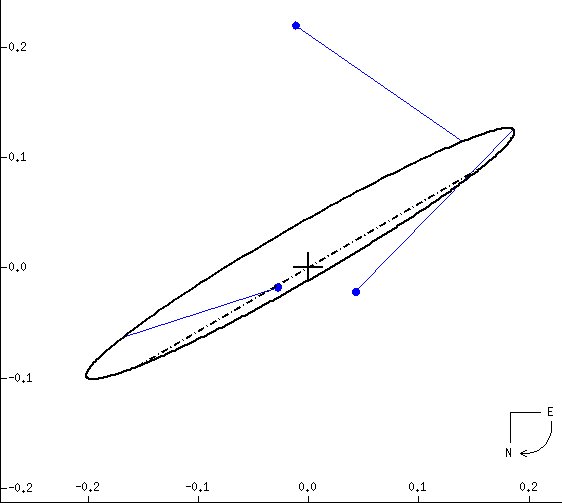
 |
Xi Aquarii B goes around the brighter member of the pair with an orbital period of 25.5 years at an average calculated separation of 15.3 Astronomical Units. In reality the two orbit a common center of mass between them. Their closeness is seen from the scale on the axes. The orbit is quite eccentric and is presented nearly edge on, so the true orbital ellipse is highly distorted. The sum of the masses from Kepler's laws is significantly larger than that derived from luminosity, temperature, and theory. From the Sixth Catalog of Orbits of Visual Binary Stars , W. I. Hartkopf and B. D. Mason, US Naval Observatory Double Star Catalog, 2006. |